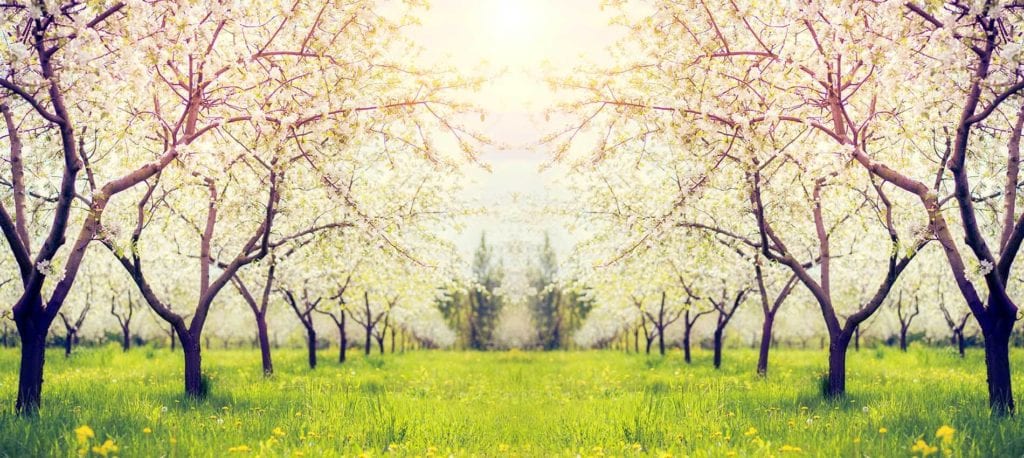Virginia landowner Diane Flynt has retired from cider making at Foggy Ridge Cider to turn her attention exclusively to orchard production on behalf of other cider makers. Flynt, who is 65 and whose husband is 13 years her senior, felt it was time to dedicate her energy solely on her Dugspur apple orchard in western Virginia. The aptly named Final Call, a dry cider, was her last release.
Twenty years ago, Flynt was the only cider producer in the region. That’s no longer the case. With Flynt leading the way, the modern hard-cidery industry has since thrived. Her vision meant casting aside dessert apples (think Granny Smith) for bitter, acidic cider apples. Ready to retire to her orchard alone, she has effectively created her own market by pioneering commercial cidery, and now sells to the same cidermakers she inspired.
Flynt planted her orchard in 1996, and it was 2005 when her first ciders were released. Landowners take note: that is a time period of roughly a decade, neither too short- nor long-range an investment. That does not meant you can set it and forget it. Fertilization, pruning, and guarding are all routine to raising a young orchard. Of course, the more mature your trees are at planting, the faster your orchard will bear fruit. If you’re sitting on unpurposed land now and think you might have an interest down the road, consider planting new trees.
Flynt planted Dugspur apples, but you should consult your local agricultural extension office for recommendations about what variety is best in your area. Ask them about funding, too, as grants might be available. According to Natural England, a public land agency in the U.K., “Cider apple orchards usually have a planting density of between 100-150 trees per half acre with 8-10 yards or so between rows and 7-9 yards between trees within the rows… Traditionally, orchard trees are planted in straight rows on a set pattern. This is so each tree receives equal amounts of light and to allow easier access for mowing, weed control and fruit collection.” When planting new trees, consider these other key factors from Natural England as well:
- New trees should be planted at traditional spacings. Within existing orchards these should follow and reinforce the original planting pattern.
- The correct planting of a tree is crucial to its long-term survival. Take care when planting and do it at the right time of year.
- Trees should be provided with adequate guards to protect them from animal damage.
- Weeds should be controlled to prevent competition until the trees are established.
- Good tree management and aftercare in the first few years after planting is crucial to ensure their survival and long term health.
Livestock guards, including cattle, horses, pig, and poultry, should be taken into consideration if animals are going to share your land. For cattle and horses, branches will need to be established high enough to be out of reach. For horses, this can be a real challenge best avoided.
Not all land is created equally. Orchards favor elevated or rolling land where cold air can fall in the spring because frost damage to blossom in spring can affect crops. Consider (and avoid) damaging wind exposure. Lowlands and clay soils can potentially water log easily, another no-no. By contrast, areas of low rainfall might need to irrigated or avoided. You probably have a gut instinct as to whether your land is right for an orchard. Follow that, and check your facts.
Flynt now often gives workshops to educate the public about cider apple orchard growing. Check her calendar for future events.
Diane Flynt’s Thanksgiving Cider Suggestions
Northeast Ciders
In a recent cider tasting, beverage professionals referred to the selection of New England ciders as “adult beverages, to be poured into a proper glass and enjoyed with a meal.” I couldn’t agree more: check out these long-time producers who are among our favorites. Eve’s Cider in the Northern Appalachians grows many of the same apples as we do at Foggy Ridge but cidermaker Autumn Stostchek’s flavors are deep, complex and guaranteed to please. Eden Cider makes amazing ice cider as well as orchard driven sparkling blends. And our long time favorites, Farnum Hill Cider and West County Cider are always delicious. These producers grow most of their own fruit and concentrate on classic English cider apples for rich flavors.
Southern Ciders
Closer to home, check out Blue Bee Cider‘s Harrison blend. Blue Bee founder Courtney Mailey is a big fan of this apple and her single varietal is the best I’ve tried. For a farmhouse-style cider, be sure to try Courthouse Creek. In North Carolina, we like Molly Chomper Cider and James Creek Cider House, where they grow authentic high-tannin cider apples near Pinehurst. Yes, you can grow real cider apples in the South! Most of these producers have online stores… If your cellar has run dry on Foggy Ridge, try a few of these stellar ciders. We’ll have these on our table for sure!
Originally published 11/20/2018, updated 10/28/2020.

